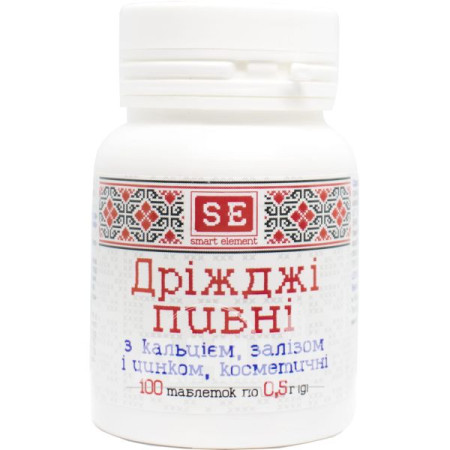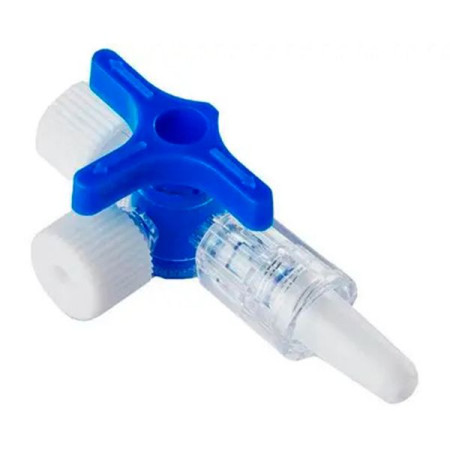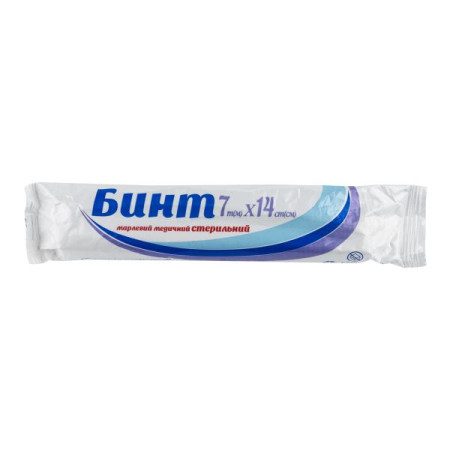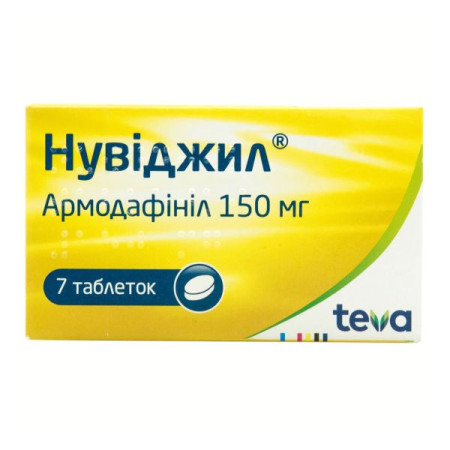Altar 3 mg tablets 3 mg blister No. 30
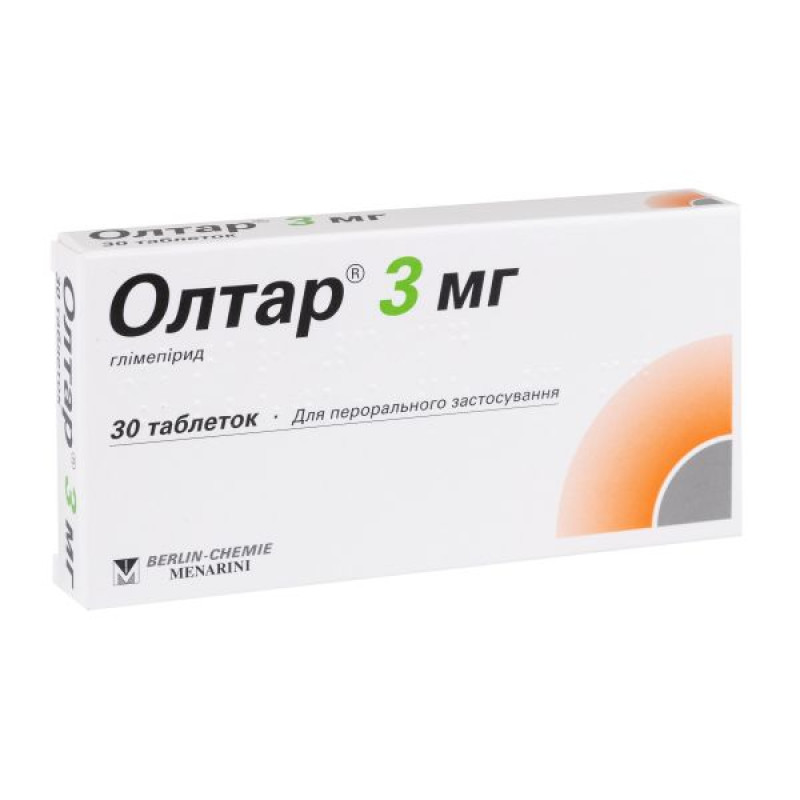
Instructions for use Altar 3 mg tablets 3 mg blister No. 30
Composition
active ingredient: glimepiride;
1 tablet contains glimepiride 3 mg;
excipients: lactose monohydrate, corn starch, sodium starch glycolate (type A), povidone, polysorbate 80, talc, magnesium stearate; Oltar® 3 mg tablets contain yellow iron oxide (E 172).
Dosage form
Pills.
Main physicochemical properties:
Oltar® 3 mg: yellow capsule-shaped tablets with beveled edges and a score line on one side.
Pharmacotherapeutic group
Hypoglycemic drugs, except insulins. Sulfonamides, urea derivatives. ATC code A10B B12.
Pharmacological properties
Pharmacodynamics
Glimepiride is an effective hypoglycemic agent belonging to the sulfonylurea group. Glimepiride is used in the treatment of patients with non-insulin-dependent diabetes mellitus.
Mechanism of action. The action of glimepiride is realized mainly by stimulating the release of insulin from pancreatic β-cells. As with other sulfonylurea drugs, this effect is based on an increase in the sensitivity of pancreatic β-cells to physiological glucose stimulation. In addition, glimepiride also has extrapancreatic effects, which are also characteristic of other sulfonylurea drugs.
Insulin release
Sulfonylurea drugs regulate insulin secretion by blocking ATP-dependent potassium channels located in the membranes of β-cells. Closing the potassium channels induces depolarization of the β-cells and, by opening calcium channels, leads to an increase in calcium influx into the cell. This leads to the release of insulin by exocytosis.
Glimepiride has a high rate of substitution when binding to a β-cell membrane protein that is associated with the ATP-dependent potassium channel, but which differs from the usual binding site of sulfonylurea drugs.
Extrapancreatic activity
Improving the sensitivity of peripheral tissues to insulin and reducing hepatic insulin uptake are, for example, extrapancreatic effects.
The absorption of glucose from the blood by peripheral muscle and adipose tissue occurs with the help of special transport proteins located in the cell membranes. The transport of glucose in these tissues is limited by the speed of the glucose absorption stage. Glimepiride very rapidly increases the number of active molecules on the plasma membranes of muscle and adipose tissue cells that transport glucose, which ultimately leads to stimulation of glucose absorption.
In selected muscle and fat cells, glimepiride increases the activity of glycosylphosphatidylinositol-specific phospholipase C, which may be correlated with drug-induced lithogenesis and glycogenesis. Glimepiride inhibits hepatic glucose synthesis by increasing the intracellular concentration of fructose-2,6-bisphosphate, which in turn inhibits gluconeogenesis.
Pharmacodynamic effects
In healthy subjects, the minimum effective oral dose is approximately 0.6 mg. The effect of glimepiride is dose-dependent and reproducible. The physiological response to acute exercise, i.e. a decrease in insulin secretion, is maintained during the action of glimepiride.
No significant difference in the effect of glimepiride was found when the drug was used with
30 minutes before or immediately before meals. In patients with diabetes, adequate metabolic control over 24 hours can be achieved with once-daily dosing.
Although the hydroxylated metabolite causes a small but significant decrease in plasma glucose levels in healthy individuals, this is only a small part of the overall effect of the drug.
Use in combination with metformin
One study demonstrated improved metabolic control with concomitant glimepiride therapy compared with metformin monotherapy in patients whose diabetes was not adequately controlled with maximum doses of metformin.
Use in combination with insulin
Data on the use of the drug in combination with insulin are limited. In patients not adequately controlled with maximum doses of glimepiride, concomitant insulin therapy may be initiated. In two studies, this combination achieved similar improvements in metabolic control as insulin monotherapy; however, a lower average dose of insulin is required with combination therapy.
Pediatric population
The 95% confidence interval for this difference was not lower than the 0.3% non-inferiority margin. No new safety data were identified for glimepiride treatment in children compared to adults with type 2 diabetes. There are no long-term efficacy and safety data in children.
Pharmacokinetics
Absorption. Glimepiride is completely bioavailable after oral administration. Food intake does not significantly affect absorption, but the rate of absorption is slightly reduced. Maximum serum concentration (Cmax) after oral administration is reached after approximately 2.5 hours (average 0.3 μg/ml with repeated administration at a dose of 4 mg per day), and there is a linear relationship between dose and Cmax, as well as the area under the concentration-time curve (AUC).
Distribution: Glimepiride has a relatively small volume of distribution (approximately 8.8 liters), which is approximately equal to that of albumin, a high degree of protein binding (> 99%) and a low clearance (approximately 48 ml/min).
In animals, glimepiride is excreted in breast milk. Glimepiride crosses the placenta. Penetration across the blood-brain barrier is low.
Biotransformation: The mean elimination half-life at plasma drug concentrations consistent with multiple-dose regimens is approximately 5-8 hours. A slight increase in half-life was observed after high doses.
Two metabolites, most likely resulting from hepatic metabolism (primarily CYP2C9), were identified in faeces and urine: the hydroxy and carboxy derivatives of glimepiride. After oral administration of glimepiride, the half-lives of these metabolites were 3-6 and 5-6 hours, respectively.
Breeding
After a single dose of radiolabeled glimepiride, 58% of the radioactivity was recovered in the urine and 35% in the feces. No unchanged active substance was recovered in the urine. Comparison of single and multiple once-daily dosing revealed no significant differences in pharmacokinetics and interindividual variability was very low. No significant accumulation was observed.
Special categories of patients
In patients with reduced creatinine clearance, there was a tendency for glimepiride clearance to increase and mean plasma concentrations to decrease, most likely due to more rapid elimination due to less protein binding. Renal excretion of both metabolites was impaired. It is believed that there is generally no additional risk of increased accumulation in such patients.
Pharmacokinetics in five non-diabetic patients after surgery were similar to those in healthy volunteers.
Pharmacokinetic parameters in men and women, as well as in young and elderly subjects (over 65 years of age), were similar.
A study investigating the pharmacokinetics, safety and tolerability of a single dose of 1 mg glimepiride in the fed state in 30 children (4 children aged 10-12 years and 26 children aged 12-17 years) with type 2 diabetes mellitus demonstrated that the mean values
AUC(0-last), Cmax and T1/2 were similar to those observed in adults.
Preclinical safety data
The effects observed in preclinical studies were observed at exposures well in excess of the maximum human exposure and therefore of little clinical relevance or were due to the pharmacodynamic (hypoglycaemic) action of the active substance. These results were obtained within the framework of conventional safety pharmacology studies, repeated dose toxicity studies, genotoxicity, carcinogenic potential and reproductive toxicity tests. The adverse effects observed in the latter (which included embryotoxicity, teratogenicity and developmental toxicity) were considered to be due to the hypoglycaemic effects of the drug in the dams and their offspring.
Indication
Type II diabetes, if diet, exercise, and weight loss alone are not enough to maintain blood sugar levels.
Contraindication
Hypersensitivity to glimepiride or to any of the excipients or to other sulfonylurea or sulfonamide drugs; insulin-dependent diabetes; diabetic coma; ketoacidosis, severe renal or hepatic impairment. In severe renal or hepatic impairment, the patient should be transferred to insulin treatment.
Interaction with other medicinal products and other types of interactions
When glimepiride is used simultaneously with some other drugs, an undesirable increase or decrease in its hypoglycemic effect may occur. Therefore, other drugs should be used only with the permission of a doctor (or on prescription). Glimepiride is metabolized under the influence of cytochrome P450 2C9 (CYP2C9). This metabolism is affected by the simultaneous use of CYP2C9 inducers (e.g. rifampicin) or CYP2C9 inhibitors (e.g. fluconazole). The results of an in vivo interaction study showed that fluconazole, one of the most potent CYP2C9 inhibitors, increases the AUC of glimepiride approximately twice.
Increased blood glucose-lowering effect and, consequently, in some cases, the development of hypoglycemia may occur with the simultaneous use of glimepiride with the following substances: phenylbutazone, azapropazone, oxyphenbutazone; insulin and oral antidiabetic drugs such as metformin; salicylates and para-aminosalicylic acid; anabolic steroid drugs and male sex hormones; chloramphenicol, some long-acting sulfonamides, tetracyclines, antibacterial agents - quinolone derivatives and clarithromycin; coumarin anticoagulants; fenfluramine; disopyramide; fibrates; ACE (angiotensin-converting enzyme) inhibitors; fluoxetine, monoamine oxidase (MAO) inhibitors; allopurinol, probenecid, sulfinpyrazone; sympatholytic agents; cyclophosphamide, trofosfamide, ifosfamide; miconazole, fluconazole; pentoxifylline (parenterally in high doses); tritoqualine.
The blood glucose-lowering effect may be weakened and, accordingly, the blood glucose level may increase when used simultaneously with the following substances: estrogens and progestogens; saluretics, thiazide diuretics; thyroid stimulating agents, glucocorticoids; phenothiazine derivatives, chlorpromazine; adrenaline and sympathomimetic agents; nicotinic acid (in high doses) and its derivatives; mild laxatives (with prolonged use); phenytoin, diazoxide; glucagon, barbiturates and rifampicin; acetazolamide.
H2-receptor blockers, b-blockers, clonidine and reserpine may either enhance or weaken the blood glucose-lowering effect of glimepiride.
Under the influence of sympatholytic agents such as β-blockers, clonidine, guanethidine and reserpine, the symptoms of compensatory adrenergic regulation of hypoglycemia may be weakened or absent altogether.
Alcohol consumption may unpredictably enhance or weaken the antidiabetic effect of glimepiride.
Glimepiride may enhance or weaken the effect of coumarin derivatives.
Colesevelam binds to glimepiride and reduces its absorption from the gastrointestinal tract. No interactions have been observed when glimepiride was taken at least 4 hours before colesevelam. Therefore, glimepiride should be taken at least 4 hours before colesevelam.
Application features
The altar should be used immediately before or during eating.
There is an increased risk of hypoglycemia in the first weeks of treatment, so particularly careful monitoring is necessary.
If meals are taken irregularly or if meals are missed, glimepiride may cause hypoglycemia. Possible symptoms of hypoglycemia include: headache, intense hunger, nausea, vomiting, increased fatigue, drowsiness, sleep disorders, agitation, aggressiveness, impaired concentration, increased reaction time, depression, confusion, speech and visual disorders, aphasia, tremor, paresis, sensory disturbances, dizziness, helplessness, loss of self-control, delirium, cerebral convulsions, drowsiness and loss of consciousness with the development of precoma and coma, shallow breathing, bradycardia.
In addition, symptoms such as sweating, clammy skin, anxiety, tachycardia, hypertension, palpitations, angina pectoris, and cardiac arrhythmias may occur. The clinical presentation of severe hypoglycemia may resemble that of a stroke.
Hypoglycemia can almost always be quickly reversed by consuming carbohydrates (sugar). Artificial sugar substitutes are not suitable for this.
Experience with other sulfonylureas suggests that hypoglycemia may recur despite initial success. Severe or prolonged hypoglycemia that is temporarily controlled by sugar intake requires immediate medical treatment and possibly hospitalization.
During treatment with glimepiride, regular monitoring of the following indicators is necessary: blood and urine glucose levels, glycosylated hemoglobin levels, liver function tests, blood count (especially leukocyte and platelet counts). If situations occur that require increased demands on the body (injuries, urgent surgical interventions, infectious diseases with fever), it may be necessary to temporarily use insulin therapy. There is no experience with the use of glimepiride in patients with severe liver dysfunction and in patients on hemodialysis, therefore, insulin therapy is indicated for patients with severe liver or kidney dysfunction. The use of sulfonylureas in patients with glucose-6-phosphate dehydrogenase deficiency can cause hemolytic anemia, therefore, glimepiride should be used with caution and alternative treatment methods should be considered. This medicinal product contains lactose and should not be used in patients with rare hereditary problems of galactose intolerance, the Lapp lactase deficiency or glucose-galactose malabsorption.
Ability to influence reaction speed when driving vehicles or other mechanisms
Studies on the effects on the ability to drive and use machines have not been conducted.
In patients with diabetes, as a result of possible hypo- or hyperglycemic states, as well as due to possible visual impairment, the ability to concentrate may be reduced. This may pose a risk in situations where this ability is particularly important (e.g. driving a car or using other machinery).
Patients should be advised to take precautions to avoid hypoglycemia while driving. This is especially important for those patients who have frequent episodes of hypoglycemia or who have reduced or no awareness of the warning signs of hypoglycemia. In such cases, the advisability of driving should be reconsidered.
Use during pregnancy or breastfeeding
Pregnancy
Risk associated with diabetes. Abnormal blood glucose levels during pregnancy increase the risk of congenital malformations and perinatal mortality. Therefore, the amount of glucose in the blood of a pregnant woman should be carefully monitored to avoid teratogenic risk. In this case, insulin is required. Women with diabetes should inform their doctor about the planned pregnancy.
Risk associated with glimepiride
There are no adequate data on the use of glimepiride in pregnant women. Animal studies have shown reproductive toxicity, which was probably related to the pharmacological action (hypoglycemia) of glimepiride. Accordingly, glimepiride should not be used during the entire period of pregnancy. If a patient using glimepiride plans to become pregnant or if pregnancy is already diagnosed, insulin treatment should be started as soon as possible.
Breastfeeding period
It is not known whether glimepiride/its metabolites are excreted in human milk. Glimepiride is excreted in rat milk. Since other sulfonylureas are excreted in human milk, there is a risk of hypoglycemia in the infant, therefore, breastfeeding is not recommended during glimepiride treatment.
Fertility
There are no data on the effect of glimepiride on human fertility.
Method of administration and doses
The basis for successful treatment of diabetes is an adequate diet, regular physical activity, and regular monitoring of blood and urine glucose levels. Oral antidiabetic drugs or insulin cannot compensate for the patient's condition if he does not adhere to the recommended diet.
Dosage depends on blood and urine glucose test results
The initial dose is 1 mg glimepiride per day. If good glycemic control is achieved, this dose should be used as a maintenance dose. Appropriate dosage forms of the drug are available for different dosage regimens. If blood glucose control is insufficient, the dose should be gradually increased to 2 mg, 3 mg or 4 mg glimepiride per day, at intervals of 1-2 weeks under blood glucose control. A dose higher than 4 mg glimepiride per day increases the effectiveness of the drug only in isolated cases. The recommended maximum dose is 6 mg glimepiride per day.
Combination therapy of glimepiride and metformin
If the maximum daily dose of metformin does not provide adequate glycemic control, concomitant therapy with glimepiride can be initiated. While adhering to the metformin dosage, glimepiride therapy should be initiated at a low dose, which can then be gradually increased to the maximum daily dose, taking into account the desired level of metabolic control. Combination therapy should be initiated under medical supervision.
If the maximum daily dose of metformin does not provide adequate glycemic control, concomitant insulin therapy may be initiated if necessary. Following the previous glimepiride dosage, insulin treatment should be initiated at a low dose, which can then be increased, focusing on the desired level of metabolic control. Combination therapy should be initiated under medical supervision.
Usually the daily dose of the drug should be taken once. It is recommended to take this dose immediately before or during breakfast or, if it was not taken in the morning, immediately before or during the main meal. If a tablet is missed, it cannot be compensated by increasing the dose at the next dose. Swallow the tablets whole, without chewing, and drink a glass of water.
If a patient receiving 1 mg of glimepiride per day experiences hypoglycemia, this indicates that it is sufficient for him to follow a diet alone to correct his metabolism.
During treatment, the need for glimepiride may decrease, as improved metabolism is accompanied by increased sensitivity of tissues to insulin. In order to avoid hypoglycemia, consideration should be given to gradual dose reduction or discontinuation of treatment. The need for dose adjustment may also arise when the patient's body weight, lifestyle and other factors that may increase the risk of hypo- or hyperglycemia change.
Switching from oral hypoglycemic agents to glimepiride
Switching from another oral antidiabetic agent to glimepiride is possible. When switching to glimepiride, the potency and half-life of the previous agent should be taken into account. In some cases, especially with antidiabetic agents with a longer half-life (e.g. chlorpropamide), it is advisable to take a break for several days to reduce the risk of hypoglycemic reactions due to potentiation of the drug action. The recommended initial dose of glimepiride is 1 mg per day. Depending on the patient's response to the drug, the dose of glimepiride can be gradually increased as described above.
Switching from insulin to glimepiride
In exceptional cases, when patients with type 2 diabetes mellitus use insulin, a switch to glimepiride may be indicated. Such a switch should be made under close medical supervision.
Children
Glimepiride should not be used to treat children due to insufficient experience.
Overdose
Symptoms. Overdose of glimepiride may lead to hypoglycemia lasting from 12 to 72 hours, which may recur after initial recovery. Symptoms may be absent for 24 hours after administration of the drug. As a rule, in such cases, observation of the patient in a hospital setting is recommended. Nausea, vomiting and epigastric pain may occur. Hypoglycemia may be accompanied by neurological symptoms such as agitation, tremor, visual disturbances, impaired coordination, drowsiness, coma and convulsions.
Treatment of overdose. First of all, treatment consists in preventing absorption by inducing vomiting, followed by drinking plenty of water or lemonade with activated charcoal (adsorbent) and sodium sulfate (laxative). When using a large amount of the drug, gastric lavage is recommended, followed by the use of activated charcoal and sodium sulfate. In case of severe overdose, hospitalization in the intensive care unit is indicated. It is necessary to start the administration of glucose as soon as possible, if necessary in the form of an intravenous injection of 50 ml of a 50% solution followed by an infusion of a 10% solution with careful monitoring of the glucose concentration in the blood. Further treatment should be symptomatic.
The treatment of hypoglycemia in infants and young children caused by accidental drug use is of particular importance. In this case, the dosage of glucose should be carefully controlled to avoid the development of dangerous hyperglycemia. Continuous and careful monitoring of blood glucose concentration is necessary.
Adverse reactions
The following classification is used to estimate the frequency of adverse reactions: very common: > 1/10; common: > 1/100 and < 1/10; uncommon: > 1/1000 and < 1/100; rare: > 1/10000 and < 1/1000; very rare: < 1/10000, unknown: cannot be estimated from the available data.
| Organ system | Rarely | Very rare | Unknown |
| Blood and lymphatic system disorders | Thrombocytopenia, leukopenia, erythrocytopenia, granulocytopenia, agranulocytosis, hemolytic anemia, pancytopenia, which usually disappear after discontinuation of the drug | Severe thrombocytopenia with platelet count less than 10,000/μL and thrombocytopenic purpura | |
| On the part of the immune system | Leukoplakic vasculitis, moderate hypersensitivity reactions that may progress to serious reactions with dyspnoea, hypotension and sometimes shock | Cross-allergy with sulfonylureas, sulfonamides, or related compounds | |
Metabolic and nutritional disorders | Hypoglycaemic reactions are usually immediate, may be severe and not always easily reversible. The occurrence of such reactions depends on individual factors such as diet and dosage of the medicinal product (see section 4.4). | ||
| From the organs of vision | Transient visual disturbances, especially at the initial stage of treatment, due to changes in blood glucose concentration | ||
| Gastrointestinal tract | Nausea, vomiting, diarrhea, bloating, abdominal discomfort, abdominal pain, which rarely lead to the need to discontinue therapy | ||
| Hepatobiliary system | Liver function abnormalities (e.g. cholestasis and jaundice), hepatitis and hepatic failure | Increased liver enzymes | |
| Skin and subcutaneous tissue disorders | Skin hypersensitivity reactions, which may manifest as skin itching, rash, urticaria, photosensitivity | ||
Additional research methods | Decreased blood sodium levels |
Reporting of possible adverse reactions
Reporting of possible adverse reactions after the registration of a medicinal product plays an important role. This allows for continued monitoring of the benefit/risk balance of the use of this medicinal product.
Expiration date
2 years.
Do not use the drug after the expiration date indicated on the package.
Storage conditions
Store at a temperature not exceeding 30 °C. Store in the original packaging. Keep the medicine out of the reach of children!
Packaging
Blisters of 30 tablets; 1 blister in a cardboard box.
Vacation category
According to the recipe.
Producer
A. Menarini Manufacturing Logistics and Services S.r.L.
Location of the manufacturer and its business address
Via Campo di Pile, 67100 L'Aquila (AC), Italy.
There are no reviews for this product.
There are no reviews for this product, be the first to leave your review.
No questions about this product, be the first and ask your question.










